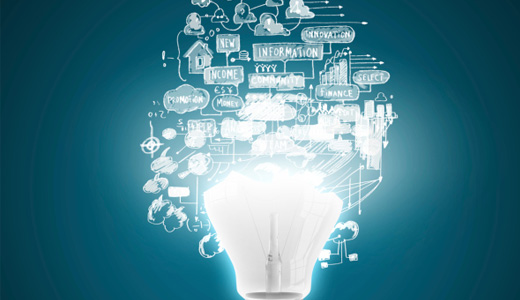
Predicting what technologies will become a reality is an extremely difficult task that typically results in plenty of ideas being thrown into the bin.
Some technologies seem almost destined to play a significant role in the future of humankind, such as artificial intelligence, while others like the hoverboard appear destined to fail and be a constant disappointment.
Not all future tech ideas threaten to have as fundamental an impact as AI but many seek to improve various elements of our lives.
CBR takes a look at some of the most amazing technology advancements that will change our lives.
Could robots ever replace human beings?
1. Artificial Intelligence
It’s currently impossible to look at the industry news without seeing something related to AI. The advancements being made in algorithms and compute capabilities has seen what was once the reserve of science fiction fully establish itself in science fact.

Yes there are significant concerns as to what impact AI could have on human kind, will it effectively make humans obsolete and take all our jobs? Will it turn evil and kill us all or enslave us in some kind of battery farm? Or will it simply improve humankind and how we go about our daily lives?
I’m not in the position to dismiss any of these scenarios, but significant efforts are being put into AI in order to augment human capabilities rather than replace us.
Plenty of work still needs to be done to make this a reality, just a quick conversation with Siri, Alexa, or Cortana will give you enough evidence to show that this is the case. But this is a technology that really could fundamentally change humankind and that doesn’t come along very often.
How could VR help workers around the world?
2. Virtual Reality
Virtual Reality has been around in one form or another for decades, but it’s only recently that technology has reached a point where it is actually good, which means that it might actually have some staying power.
VR isn’t just being pitched now at gamers, it is trying to become an enterprise tool that will help people to work more efficiently and empower remote workers around the world.
The technology is also significantly breaking down barriers in terms of opening up the world for people to explore.
Take Google Earth VR for example, this will allow users to fly over a city, stand on mountains and even go into space.
Art and design is being re-imagined and education is being made more interactive.
Virtual Reality may well be finally here to stay.
The next entry could help disabled people walk again
3. Exoskeleton
A company called suitX has created a mobility exoskeleton that’s designed for disabled users.
The exoskeleton uses motors to move the wearers legs and now there is a non-motorised product called MAX, Modular Agile Exoskeleton.
The kit is designed to be worn by those that work in places like factories, warehouses,

or construction sites. It mechanically supports and augments the wearers musculoskeletal system in order to aid them when doing things like lifting heavy objects, squatting or bending.
Microcomputers in the legs are capable of communicating with each other and figure out if the wearer is doing any tasks.
The exoskeleton idea isn’t a new one, but again it is technology that is turning this idea into a reality.
The potential applications for this helping people with spinal injuries to walk or helping others to go about their daily tasks are something that should really capture many people’s imagination.
Would you get in a capsule that travels up to 700mph?
4. Hyperloop
I wrote about the tech revolution that Elon Musk is striving ahead with and of course the Hyperloop, along with other technologies, featured.
The idea is to create a new form of transport, one that relies upon reduced-pressure tubes that carry pressurised capsules in an air cushion that’s driven by linear induction motors and air compressors.

A 3km full-scale and full speed enclosed prototype is currently being put together in Nevada and testing could be underway as soon as next year.
The significance of this is that it’s a new form of transportation, that doesn’t come around very often, and it could achieve speeds of up to 700mph.
Musk is developing it with the idea of providing a connection between Los Angeles and San Francisco and it will likely be run using renewable energy sources, which would mean it’s cleaner and faster than all traditional modes of transport.
Could your t-shirt power your phone in the future?
5. Renewable energy
Inspired by Marty McFly’s self-lacing trainers in Back to the Future II a University of Central Florida scientist has developed filaments that harvest and store the sun’s energy and can be woven in to textiles.
Basically this would turn clothing into solar powered batteries that could be used to charge phone batteries on the go, or reduce the weight of carrying battery packs around for military personnel.

The university published the research on the 11th November in the academic journal, Nature Communications.
The researchers developed copper ribbon filaments that are thin, flexible and lightweight and the ribbons have a solar cell on one side and energy storing layers on the other.
In a proof of concept the researchers showed that the filaments could be laced through jackets or other outwear in order to harvest and store energy.
Broken bones could heal faster if doctors think past 2D
6. 3D printed casts
Say goodbye to the traditional cast because 3D printed ones could revolutionise the treatment for broken bones.
Using 3D printing to create a lattice pattern cast combined with an ultrasound system a Turkish industrial designer called Deniz Karasahin says that it could help bones heal up to 40% faster.
The lattice design is to remove the nuisance of a smelly and itchy cast and the ultrasound system, known as LIPUS, can be applied for 20 minutes a day in order to help speed up the healing process.

Numerous companies around the world are now working towards making 3D printed casts a reality.
In theory it’s a reasonably simple process, a scanner gathers the specifications of the limb, and a software programme is used to build it into a personalised cast that is then printed.
One of the big perks to this is that the limb remains accessible to the doctor so that things like skin health and the re-dressing of wounds is much easier.
Could you live in a printed house in the future?
7. 3D printed houses
Yes it is another 3D printing example but this is pretty awesome.
Some companies around the world have already begun looking at printing houses and one company in China claimed that it built a full house in 45 days.
The two-storey, 400-square metre home has walls as thick as eight-feet and was constructed using giant printers that used special reinforced concrete.
The development could potentially revolutionise the construction of houses, and while it is probably not going to be a common site any time soon, the use of giant 3D printers for manufacturing houses may well lead to the creation of a cheap and affordable housing that is of high quality and can be quickly constructed.
Another example of this being done is from Andrey Rudenko who managed to print a castle.
Who is behind the wheel…no one in the future
8. Autonomous vehicles
Linked to artificial intelligence and just as controversial a topic, the driverless car or autonomous vehicle is attracting interest and investment from car manufacturers and tech companies around the world.
Samsung recently made an $8bn investment into driverless cars and the likes of Google is also investing heavily in making this a reality.
The theory is that a combination of sensors and scanning equipment with real-time analytics would make driving safer.
The problem is that people are quite often the cause of accidents, so by removing them from the equation, or at least augmenting their abilities, the number of car accidents will go down and driving will become a lot safer.
What could help drug addicts in the future? Clue: its very very small
9. Probuphine
This is a modern way of administering treatment through implants.
The idea is designed to help patients to beat drug addiction through the implanting of tube-like flexible implants into a patient’s upper arm.

The implants, which are the size of a matchstick, are capable of drip-feeding a drug called Buprenorphine, a semi-synthetic opioid medication that is designed to combat a dependency on opioids.
The drug is capable of fastening onto the same neural receptors that are triggered by heroin or narcotic painkiller use and they curb the patient’s desire to get high.
The implants are replaced every six months but they basically work like a microscopic IV.
By providing a convenient method of treating patients like this it means that the issue of remembering to take medicine is a thing of the past.
Doctors are experimenting with a treatment which could cure things like depression
10. Deep brain stimulation
The DBS treatment requires an electrical current being delivered deep in the brain

through an electrode.
This required a hole in the skull and while it has worked in treating epilepsy or Parkinson’s in some cases, it is an extreme step that is not widely done.
In the future this could change. Work is being done to advance DBS through stimulators that are placed on the outside of the head and it could be used to treat things like depression, obesity and obsessive compulsive disorders.
Imperial College London developed a method that places two electrical fields of different frequencies on the outside of the head. Where the fields overlap, the brain tissue is stimulated and the brain tissue under just one field is left unaffected.
The treatment has been shown to work on mice and tests have been carried out on nine healthy people as they lay in an fMRI brain scanner.






